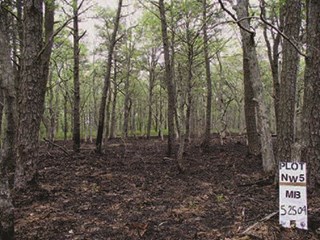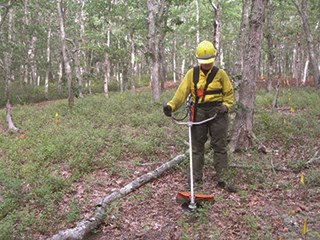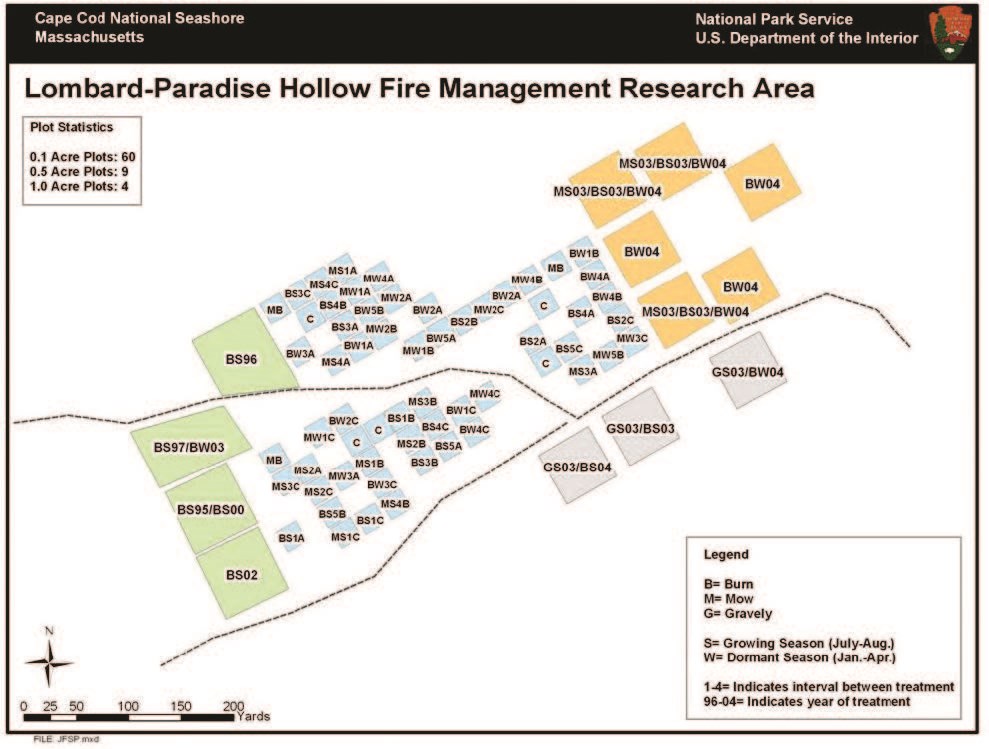
NPS Periodic wildland fire helped create the fire-adapted pine-oak woodland vegetation type found throughout the Seashore and within the research area. The dominant canopy species are pitch pine (Pinus rigida) and white and black oaks (Quercus alba and Q. velutina), with scrub oak (Q. ilicifolia), huckleberry (Gaylusaccia baccata), blueberries (Vaccinium spp.), and wintergreen (Gaultheria procumbens) in the understory. 
NPS wildfires which could threaten structures within the Seashore boundaries. In 1986, the National Park Service, in cooperation with the University of Massachusetts/Amherst, initiated applied research on the effectiveness of varying the season and frequency of treatments on forest composition, fuel loading, and fire behavior on sixty 0.1-acre plots. In 1995, larger 1-acre plots were established, and in 2003 nine additional 0.5-acre plots were created. Fuel treatments included prescribed burning and mowing (brush cutting). 
NPS Treatments have been evaluated with respect to their effectiveness in restoring and maintaining ecological integrity of fire-adapted ecosystems. The treatments have also provided training opportunities for wildland firefighters, as well as prescriptions for improving public safety in the wildland-urban interface. 
Principle Investigators for the project are:Dr. William A. Patterson IIIProfessor of Forestry 214 Holdsworth Natural Resources Center Box 34210 University of Massachusetts Amherst, MA 01003-4210 (413) 545-1970 / wap@forwild.umass.edu David W. Crary, Jr. Fire Management Officer Cape Cod National Seashore Fire Management 99 Marconi Site Road Wellfleet, MA 02667 (508) 349-3785 x 247 / David_Crary@nps.gov |
Last updated: February 7, 2018
